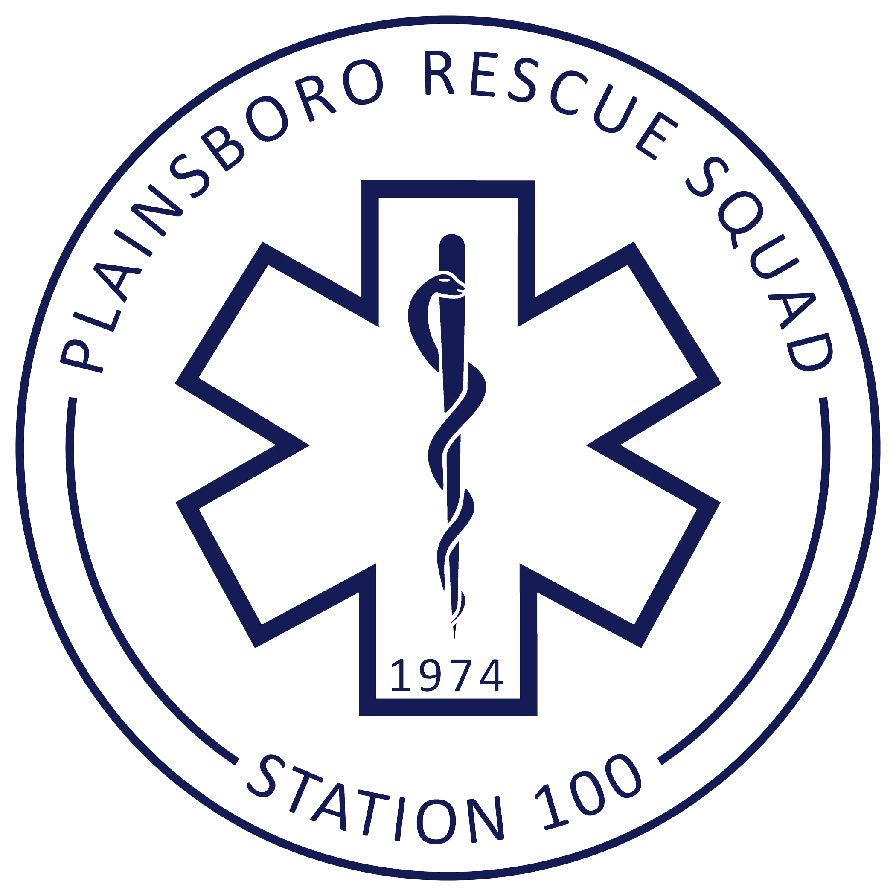Got a Question? Here Are a Few Answers:
General Questions
No. We are a separate organization, but work closely with the Fire Department during emergencies where medical service may be needed. Some members of the rescue squad are also firefighters.
No. We are strictly volunteers. Plainsboro Township provides dispatching of all 9-1-1 calls from a central location. Plainsboro police are also dispatched for medical emergencies.
Yes, but this is not PRS. The Township provides two paid EMTs Monday through Friday, 6am to 6pm. This organization is called “Plainsboro Township EMS.” This paid service is necessary because most of the volunteers have daytime jobs or school. However, even during the workday, locally working volunteers provide backup to Plainsboro Township EMS.
No—just the opposite. PRS acquires the ambulances used by both PRS and Plainsboro Township EMS through fundraising activities and charitable grants. The ambulances and other equipment are maintained by PRS.
The daytime paid crew typically wear a “dress uniform” consisting of a blue shirt and dark pants. Volunteers are supplied a number of different uniforms:
- A dress uniform consisting of a white collared shirt and dark pants.
- A blue short-sleeve polo shirt with dark pants.
- A blue long sleeve pullover shirt with dark pants.
- A dark blue jumpsuit with a blue protective coat (for EMTs).
Questions For Patients
Not if PRS handles the call. Plainsboro Township EMS, however, does charge for providing services. If it determined that Advanced Life Support is needed, paramedics may be dispatched to provide additional care, and those services will be billed by the hospital that sponsors the paramedics. This may be confusing because the bill is likely to say something like “for ambulance service”, that is not us. PRS does not charge for anything. If you have questions, please contact your insurance company or call the number listed on your bill.
No. We have to remain available for emergencies, so we will not provide non-emergency services.
Plainsboro Township police are trained to assist with many medical emergencies. They are also there for the safety of everyone on the scene including the ambulance crew.
When a person dials 9-1-1 for a medical emergency, it is assumed that the injury or illness is severe enough that the person needs to go to the hospital. If during the assessment the patient decides not to go to the hospital, it is their decision to do so as long as they are medically competent to make that decision. We ask patients to sign a Release from Medical Assistance (RMA) form to release the PRS crew from future liability associated with the patient’s decision. However, if patient changes their mind, we will gladly take them to the hospital. We will always transport a patient to the hospital when they want to go, but we cannot force them under most circumstances.
No. Priority is based on the seriousness of the patient’s condition, based on illness or injury, not whether you were transported by an ambulance. If the emergency room is busy, the hospital staff may ask you to wait in the triage area to be seen.
Penn Medicine Princeton Medical Center at Plainsboro is the closest hospital, and most patients choose to go there. However, depending on the type of medical emergency, the EMT crew or Paramedics may suggest a more appropriate hospital for the circumstances. Helene Fuld Hospital in Trenton and Robert Wood Johnson Hospital in New Brunswick are Trauma Centers that have staff specially trained to deal with serious injuries. You may also choose to go to a different hospital such as Robert Wood Johnson in Hamilton, Mercer Hospital, or Saint Peters Hospital. We will try to accommodate your request, but may advise otherwise depending on such factors as weather conditions or if a hospital is on divert.
Questions on Riding and the Cadet Organization
There is a minimum amount of training you will need, that the squad provides — CPR, First Aid, and Blood Borne Pathogens as well as online courses required by the federal and state governments. You will also need to show proof of vaccination against Hepatitis (provided for free if you have not received it). Then, there are three internal training modules you must pass before you can function as a crew member. The entire process can be completed in about two months. At this point, you will be able to ride as a Trainee on the Squad ambulance. The squad will encourage you to take a class to become an Emergency Medical Technician (EMT) as soon as possible. More experienced members will work with you as you learn throughout this process.
Cadets are individuals who joined while in high school and go through the same training as the adult members.
We have strict limitations on the number of cadets making the acceptance process highly competitive.
You will build friendships while learning new life skills all while spending time away from home (we know your parents will like that).
